In Azerbaijan, tourists find themselves in cultural crossroads
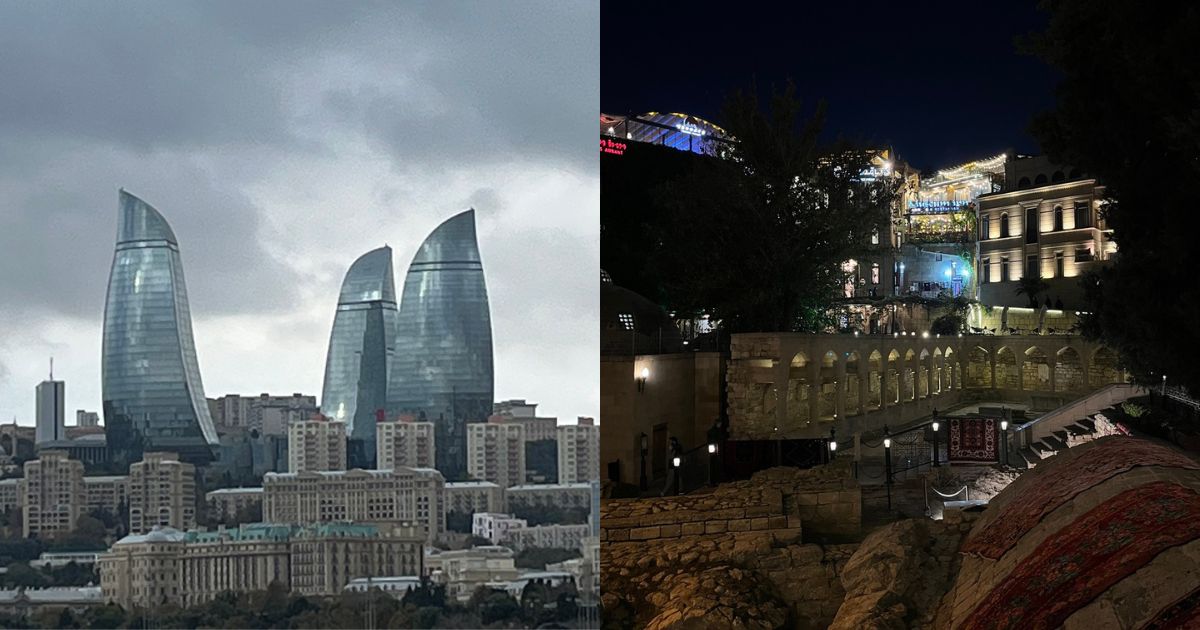
If you're a tourist looking to visit less traveled destinations, consider adding the Eurasian country of Azerbaijan to your bucket list.
At least in the Philippines, little is known about the country that hosted the 29th Conference of Parties in November. From Manila, the capital city of Baku is about 12 hours away by plane, give or take layovers.
Azerbaijan, a largely Muslim country, is so rich in oil and gas that land literally spits them out. And yet, it has so much more offer to tourists in search of rich cultural experiences, owing to its location in the crossroads between Europe and Asia.
Here are some of the reasons why you should visit this nation on the western coast of the Caspian Sea.
Modern architectural marvels
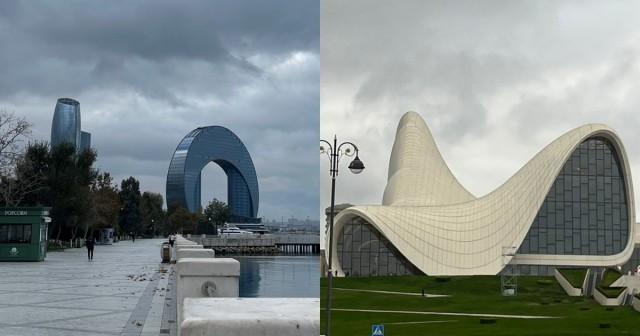
Landing at the Heydar Aliyev International Airport, with its floor-to-ceiling glass panels arranged in a 45 degree angle to let in natural light, should clue you in on Baku's modernity. Its skyline is a collection of curvaceous buildings that seem to defy the laws of physics.
On the coast of the Caspian Sea is the Crescent Hotel, a rounded building made to look like a crescent moon whose two tips touch the ground. On Downtown Baku stands the Socar Tower, the headquarters of Azerbaijan's state oil company, with two towers that curve around each other at the top. Right next to it is the Azersu Tower, which features the shape of a teardrop on its glass body.
There's the jaw-dropping Zaha Hadid-designed Heydar Aliyev Center, a cultural hub that's as interesting on the outside as it is on the inside, and one that's a pleasure to look at in the daylight as it is at nighttime. It lends a strangely delightful cosmic quality to the city that juggles a strong Soviet aesthetic, a distinct Moorish vibe, and in some quarters, the beautiful quality of any European city.
But it's impossible to talk about Baku architecture without mentioning the popular Flame Towers. Located on a hill towering over the Caspian Sea, the complex features three glass towers made to look like flames of fire. The country is called Land of Fire after all — the name Azerbaijan literally means "protector of fire" — and has a long history of fire worship. Natural gas flares emit straight from the ground, feeding eternal fires.
At night, LED screens that cover the Flame Towers light up and mimic, among others, the movement of fire. Best viewed from Old City, the electric light show of the Flame Towers put a spotlight to the striking contrast between old and new in Baku.
East and West
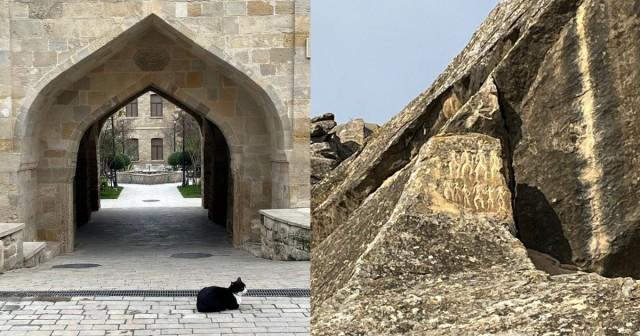
Situated in Eurasia or Central Asia, Azerbaijan is on the famous Silk Road and as such, is a jumble of influences from Europe and Asia.
It's not unusual for a building of Moorish architecture to stand right next to a modern and curvaceous skyscraper, right next to one of Soviet influences, on a cobblestone street that will remind you of Paris.
The Old City, especially at night, can transport you back to classic Arabia, with narrow streets, private gardens and shops that sell carpets and Aladdin's lamps and camel figurines.
Also known as the Walled City of Baku, a Unesco World Heritage Site is "built on a site inhabited since the Paleolithic period" revealing "evidence of Zoroastrian, Sasanian, Arabic, Persian, Shirvani, Ottoman, and Russian presence in cultural continuity."
At the foot of the beautifully lit 12C Maiden Tower, is an open air museum that lends the environs even more enigma. Plenty, empty narrow and winding streets meanwhile can make you feel like you were lost in medieval Italy, or in some other world and in some other time.
Because more than anything, Azerbaijan really feels like it belongs to another time. Several kilometers southwest of Baku stands the Gobustan State Reserve, famous for its prehistoric petroglyphs, drawings and carving on the rocks that depict life between 5,000 and 20,000 years.
Slick City
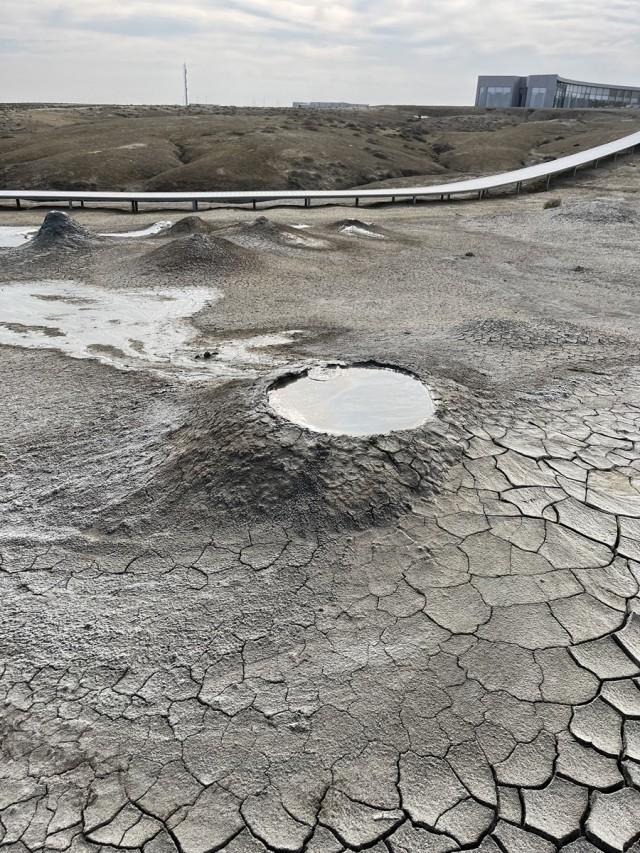
Azerbaijan is home to about a third of the world's mud volcanoes. Just outside the capital, there are about 400 of them, active and bubbling with thick mud that includes oil, gas, and methane, and is said to have many health benefits. The black landscape, featuring inverted cone shape formations, is slick with what feels like oil.
On the way to the mud volcanoes in fact, oil fields abound where small, makeshift-looking drill machines will inform you of how shallow they need to dig just to obtain what their President has called "a gift from God."
Such attitude toward the resource that's driving the climate crisis should reveal Azerbaijan's contribution to the planet's fossil fuel dependency. Azerbaijan is an early player in the oil industry, supplying more than half of the world's supply in 1901.
In fact, it is widely believed that Marco Polo — yes the Italian world explorer Marco Polo — made notes about the gushing oil geysers of what is now present-day Azerbaijan. New York Times reports he even described oil as "salve for men and camels affected with itch or scab."
And the Nobel Peace Prize? A fraction of the money that helped establish the prize actually came from oil money. The Nobel brothers were actually oil barons of Baku.
Food and drink
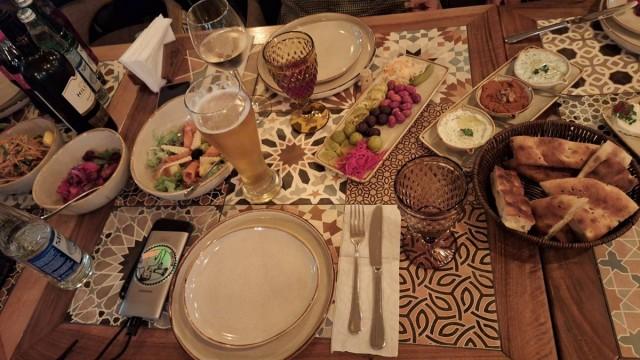
Food is a communal affair in Azerbaijan. Meals feature lots of little plates not unlike the Middle Eastern mezze or with the proliferation of baklavas in the market, Turkish food comes to mind. There's lots of dairy, lots of olives, and lots of meat.
They are proud of their Dolma, grape leaves stuffed with meat, rice, onions, and herbs but more widespread is the kebab. It dominates the city center, with kebab stands on what feels like every other corner. Along with bars — or perhaps as a pregame to them — kebab restaurants feel like a weekend destination, with long lines of people on the streets.
Western brands are also present but not popular, with things like McDonalds, KFC, Burger King and Gloria Jeans having a modest presence in Baku.
There is a peppering of coffee shops in Baku, with some looking to follow the aesthetics that's become so common among cafes but tea is really Baku's drink of choice. Fragrant, with a cube of white sugar taken before letting the warm drink melt it away.
At night, downtown Baku feels like Poblacion, with its narrow roads jammed up in traffic, and young people on the streets, lining up for a kebab, a drink, and having a good time.
There is no shortage of bars each with their speciality — beer, cocktails, or live music.
Parks
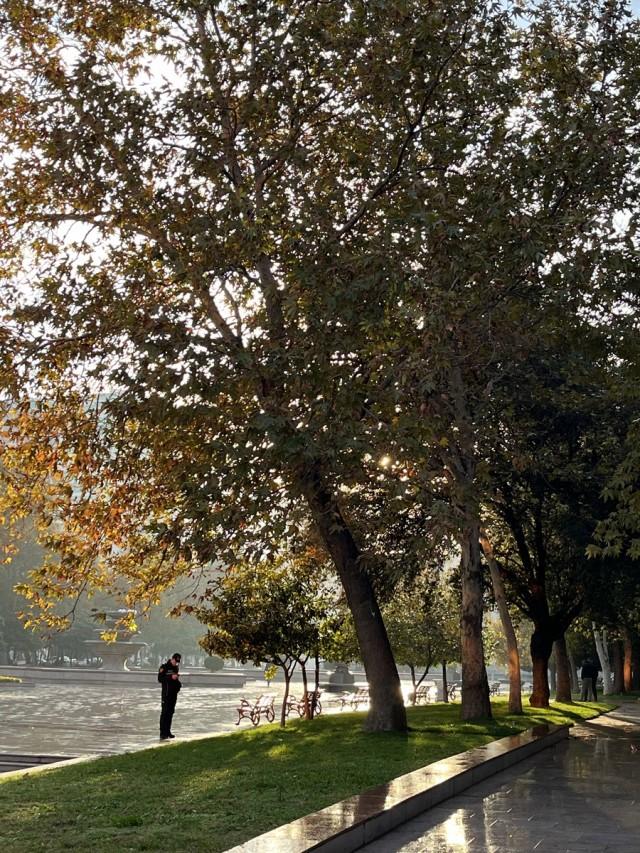
Baku took to heart the World Health Organization's recommendation for parks to be within a 10-minute walking distance. At the city center, there are parks on every other block. And they're not just any parks, mind. Large trees line the perimeter, before soil gives way to fancy marble flooring. There are benches and walkways on all sides, and in the middle, a gargantuan fountain. Here, residents come together to enjoy their city, enjoy the sunshine, enjoy themselves.
As you go from the city center, parks take on a less grandiose and a more linear form, inserting themselves in narrow patches of available land. One example is the Nikolai Tesla linear park at the crossing of Azadlig Avenue and Suleiman Rahimov Street, providing seats and tree shade to weary urbanites.
On the banks of the Caspian Sea is the four-kilometer long national park that is the Baku Boulevard, offering residents and visitors a chance to take in the calming effect of the waters, enjoy the unique architecture of the city, meet their daily 10,000 steps, visit amusement parks and museums like the Carpet Museum, or simply enjoy a warm glass of cherry tea or coffee.
—MGP, GMA Integrated News



